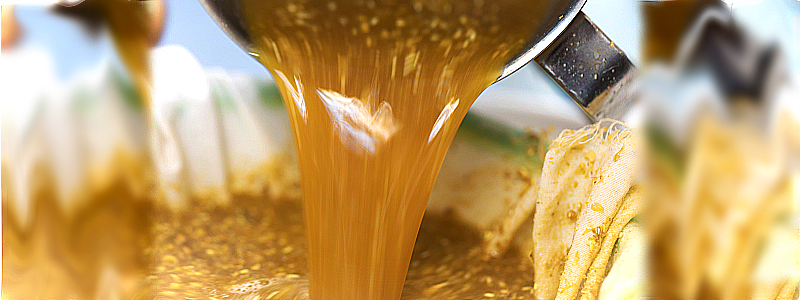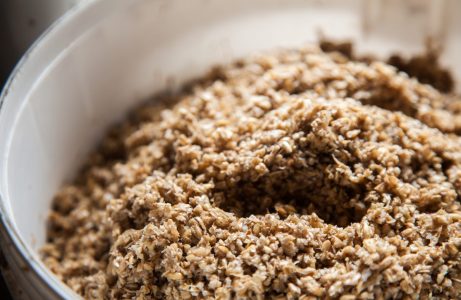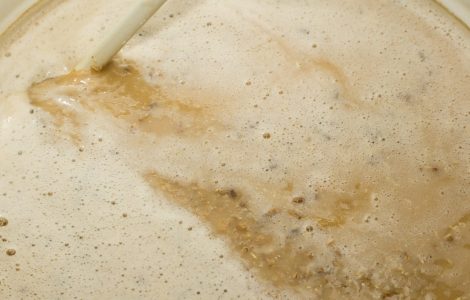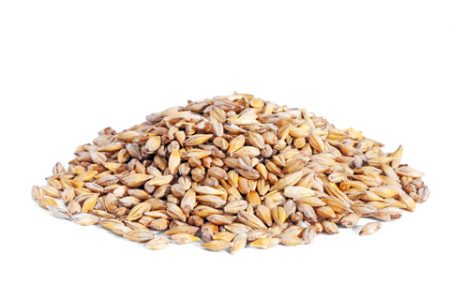 27 Sep 2022
27 Sep 2022
Beer residue for pig feeding as well as for other species.
Feed represents 65% of the total costs associated with pig production. This value can grow up to 70 and 75% when grains are out season.
![]() In this sense, efficiency in pig production, highly depends on proper feed planning.
In this sense, efficiency in pig production, highly depends on proper feed planning.
Under such scenario, there is a constant search for alternative raw materials that are cost effective. Among the various alternatives, within industrial by-products, beer waste represents a highly viable option when there is an abundant supply available near the farm.

By-products of the human food industry, usually have a high fiber content which reduces their nutritional value for non-ruminants. This has to due with the fact that fiber interferes with the proper digestibility of these by products.
Residues from the brewing industry
The brewing process begins with the production of the wort. This sugar-rich solution is used in a subsequent fermentation stage to produce ethanol.
For the production of wort, ground barley malt is mixed with water at a temperature of up to 78°C. This process converts malt starch into fermentable (mainly maltose and maltotriose) and non-fermentable (dextrins) sugars.

Barley malt proteins are partially degraded during this stage into polypeptides and amino acids. The undegraded insoluble part of the barley malt grain obtained at the end of this process is known as “ Brewer’s Spent Grain”(BSG).It is obtained in a mix with the wort.
The wort is filtered through the BSG bed formed at the bottom of the maceration vat and transferred to the fermentation tank, while the BSG is obtained as a by-product of this process. [register]
In some cases, depending on the type of beer, other cereals such as corn, rice, wheat, oats, rye or sorghum mixed with barley malt can be used to make the wort. In such cases, the insoluble part of these grains after the maceration process is separated with BSG as a single fraction.
BSG’s annual global production has been estimated at approximately 38.6 × 106 tonnes.
![]() Due to the considerable anual production levels for BSG, it is necessary to find ways through which this agro-industrial by-product can be given added value.
Due to the considerable anual production levels for BSG, it is necessary to find ways through which this agro-industrial by-product can be given added value.

BSG composition
BSG is mainly composed by the shells of barley malt grains mixed with part of the pericarp and seed coat layers.
Although it is well known that BSG is rich in sugars, proteins and minerals,its chemical composition can undergo significant variations due to different factors, such as:
Table 1 summarizes the chemical composition of BSG reported in different studies using barley malt produced in various countries, including Brazil, Japan, Portugal and Ireland.
Table 1. Chemical composition of the BSG according to different authors.

Source: Modified form Mussatto et al. 2013
This table clearly shows the variations in the chemical composition of this raw material as a consequence of what was previously. For example, Mussatto and Roberto and Waters et al. used BSG derived from a brewing process without the addition of other cereals (i.e. using 100% barley malt), but the former used Brazilian barley malt while the latter used barley malt from Ireland.
Regardless of the reported variations in the quantity of each constituent within the composition of BSG, this material is mainly composed by fibers (cellulose, hemicellulose and lignin) and protein.
Hemicellulose and cellulose are fractions made up of sugars. Amongst which xylose, arabinose and glucose are the most abundant in BSG. Sugars make up half of the composition of BSG in terms of dry weight. Thus, they represent a very important fraction.
In addition to sugars, lignin (a polyphenolic macromolecule of complex structure) and proteins are also present in significant amounts in BSG.
Essential amino acids account for approximately 30% of the total protein content, with lysine being the most abundant (14.3%), followed by leucine (6.12%), phenylalanine (4.64%), isoleucine (3.31%), threonine (0.71%) and tryptophan (0.14%).
BSG non-essential amino acids (corresponding to 70% of total protein content) mainly include histidine (26.27%) and glutamic acid (16.59%), with smaller amounts of aspartic acid, valine, arginine, alanine, serine, tyrosine, glycine, asparagine, γ-aminobutyric acid and glutamine.
Finally, BSG also contains a variety of minerals, amongst which silicon, phosphorus and calcium are the most abundant. Silicon is also the most abundant mineral element in other cereals such as rice, oats and wheat straw. However, the phosphorus and calcium content in BSG is particularly higher than what is commonly reported for these cereals.

Use of BSG in animal feed
Currently the main use for BSG is as livestock feed. It can be used directly in wet form (separated from mash tun) or as dry material. The high fiber and protein contents in BSG along with its low cost make it an attractive substrate for its inclusion in animal feed.
![]()
Several studies revealed that the inclusion of BSG in dairy cow diets increases milk production and total solids content.
The significant advantages resulting from the inclusion of BSG in livestock feed have encouraged its inclusion in the feed of other animals such as poultry, pigs and fish.
![]() It has been shown that BSG can be included in the diet of finishing pigs with levels of up to 20% without affecting performance. This is true for diets that have been properly balanced.
It has been shown that BSG can be included in the diet of finishing pigs with levels of up to 20% without affecting performance. This is true for diets that have been properly balanced.
Conclusions
In the past, most of the BSG derived from beer production was discarded into the environment. Currently, breweries often supply this material at low cost to local farmers for its use as livestock feed.
BSG represents a raw material of interest for its feeding applications in different species due to its low cost, high availability throughout the year and valuable chemical composition.
[/register]
Subscribe now to the technical magazine of animal nutrition
AUTHORS

Nutritional Interventions to Improve Fertility in Male Broiler Breeders
Edgar Oviedo
The Use of Organic Acids in Poultry: A Natural Path to Health and Productivity
M. Naeem
Synergistic Benefits of Prebiotics and Probiotics in Poultry, Swine, and Cattle
Gustavo Adolfo Quintana-Ospina
Hybrid Rye Potential in Laying Hen Feed Rations
Gwendolyn Jones
A day in the life of phosphorus in pigs: Part I
Rafael Duran Giménez-Rico
Use of enzymes in diets for ruminants
Braulio de la Calle Campos
Minerals and Hoof Health in the Pregnant Sow
Juan Gabriel Espino
Impact of Oxidized Fats on Swine Reproduction and Offspring
Maria Alejandra Perez Alvarado